Today’s guest post on the beautiful temples of Myanmar is by the wonderful Deah Hester of www.palmtreemusings.com. All photographs on this blog belong to Deah Hester and are subject to copyright regulations.
Visiting the Beautiful Temples of Myanmar
While visiting Thailand, we decided to take a quick flight to Myanmar to visit a friend doing aid work in Yangon. Flights from Bangkok are cheap, and many nationalities can get an electronic visa, so before we knew it we were arriving in the capital city Yangon (formerly known as Rangoon).
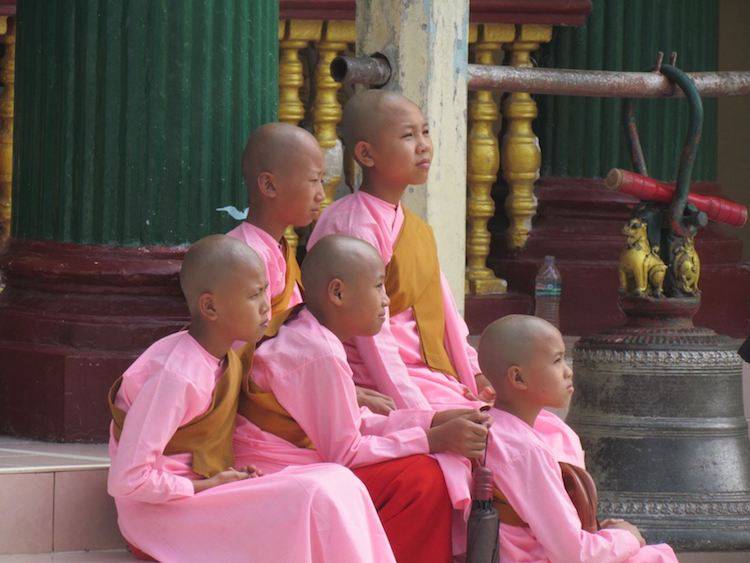
Temples of Myanmar: Shwedagon Pagoda, Myanmar
Yangon is home to dozens, if not hundreds of temples, but it’s most famous and majestic one is Shwedagon Pagoda. It is 99 meters tall and is plated with gold and precious jewels so it is quite a sight to behold. It is thought to have been built around the 6th century, making it the oldest pagoda in Myanmar (formerly called Burma).
The spot was chosen when two Burmese merchants met the Buddha in India, were given eight of his hairs, and were told to enshrine them in the spot in Burma where other relics were already enshrined.

Visiting the Shwedagon is pretty easy – all the taxi drivers will know which one you mean, and there is an elevator at three of the four entrances if you have trouble with stairs. Walking around the Shwedagon takes a while – there is a lot to see! Be sure to wear sunglasses if you are visiting in the summer: the sun reflects off the gleaming white marble and the gold plating and is quite bright.

The temple is open daily from 6am to 10pm, and costs approximately $5 to enter. Dress appropriately, of course, and be prepared to leave your shoes and socks at the entrance or in a small bag.
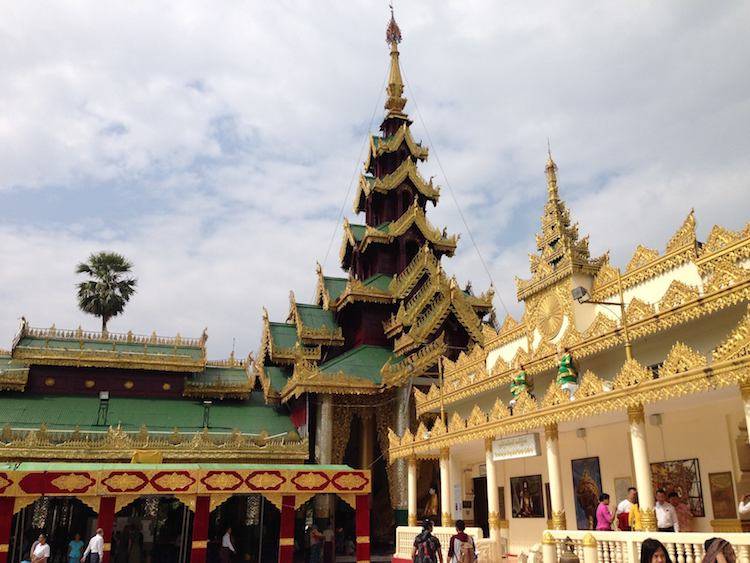
Temples of Myanmar: The Plains of Bagan
From Yangon, we took an overnight bus to Bagan to see the plains full of hundreds of stupas there. We arrived at 5am, and as we dropped our bags at the hotel, we noticed rows of monks silently streaming out to the edge of town. We had a feeling that wherever they were headed would be interesting, so we left our bags at reception and followed the monks and other tourists down the pre-dawn streets.

The town of Bagan is not very big, so in just a few minutes we were on the edge of town and at the start of the huge plateau that surrounds the area. As we roamed along the paths, we could hear a gentle noise some distance away – a kind of hissing sound. Intrigued, we headed in that direction. Soon, as the sun started to peek over the horizon, we began to see huge hot air balloons begin to rise. At first one or two, and by the end of the dawn hour, there were perhaps 50 or 60 hot air balloons, in every direction we looked. It was magical, and perhaps the most beautiful thing I’ve seen on my travels. We absolutely could not stop taking pictures.

To get to Bagan, you will need to stop and pay a fee of 25,000 kyat (approximately $20 US) at the edge of the archaeological zone. If you take the bus or train, they will stop and everyone will pay on the way into town. The ticket is valid for five days, so plan to stay a few in Bagan. Several places in town rent bicycles to make exploring the plateau easier, or you can just walk around a few mornings and sunsets. Inquire in town about taking a hot air balloon ride- they were charging about $300 per person when we were there but that may vary by season.
A little history: Bagan was the capital of Burma from about the 9th to 13th centuries. During those years, over 10,000 temples were built across the plains. They were eventually sacked by the Mongols, but the place always remained a destination for Buddhist pilgrims.
In the years since, several earthquakes have damaged or brought down many of the temples, and now there are approximately 3800 left. Interestingly, it is not a UNESCO World Heritage Site – partly due to the renovations the government did to some of the stupas in recent decades (ironically, after a 2016 earthquake, most of the old stupas were untouched, while the “renovated” ones suffered greatly). Some of the temples are open and you can enter, while others are locked or tended to privately by families, who may be at the temple when you visit.
Follow this link for Bagan Tours.
Temples of Maynmar: Mandalay – The Capital of Burma under British Rule
Mandalay is a relatively young city, and was the capital of Burma when it was under British rule. It was founded in 1857. There is a legend that the great Buddha once visited the area and said that a great city would be built on Mandalay Hill in the Buddhist year 2400. Later, the king at that time decided he must fulfill Buddha’s prophecy, and he built the city and a large temple with the “prophesying Buddha” in it.
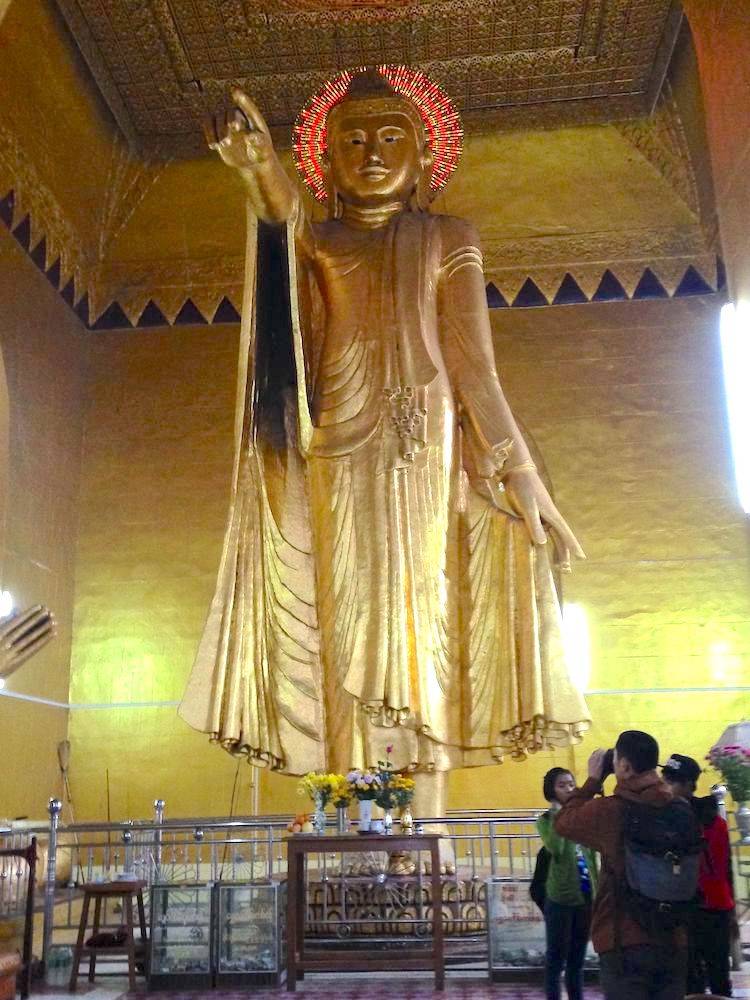
In this temple, the Buddha stands and points to the hill Mandalay began on (that one is called Byadeippay Buddha). Now, Mandalay and the surrounding area contain several dozen temples. One of the biggest is Mahamuni Buddha Pagoda, which shows Buddha seated on a throne, covered in gold leaf. In 1884, the temple burned down, and over 200 pounds of gold was recovered (the statue and the temple were rebuilt).
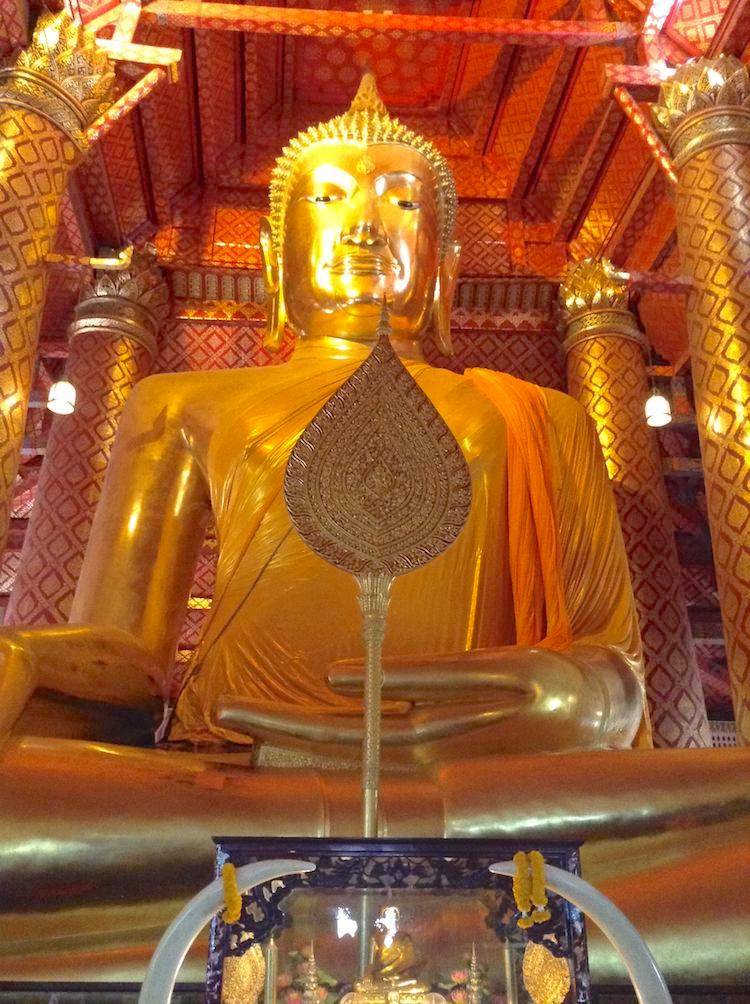
My favorite sight in Mandalay was the Kuthodaw Pagoda, known for its 729 stone slabs that contain the text of the Tripitaka, the sacred Buddhist teachings. This pagoda is often referred to as the world’s largest book. I would recommend not missing this one, as it is a lot of people’s highlight in their trip to Mandalay. It is located at the base of the southeast stairway to Mandalay Hill, so if you can locate that on a map, then the Kuthodaw, or Tripitaka, is close by. Try to locate it on your map before you leave your hotel, and then a cab driver should be able to get you there. Entrance to the Tripitaka was free when we went, although there was a fee to climb Mandalay Hill and visit the statue at the top (you can also take a mototaxi).
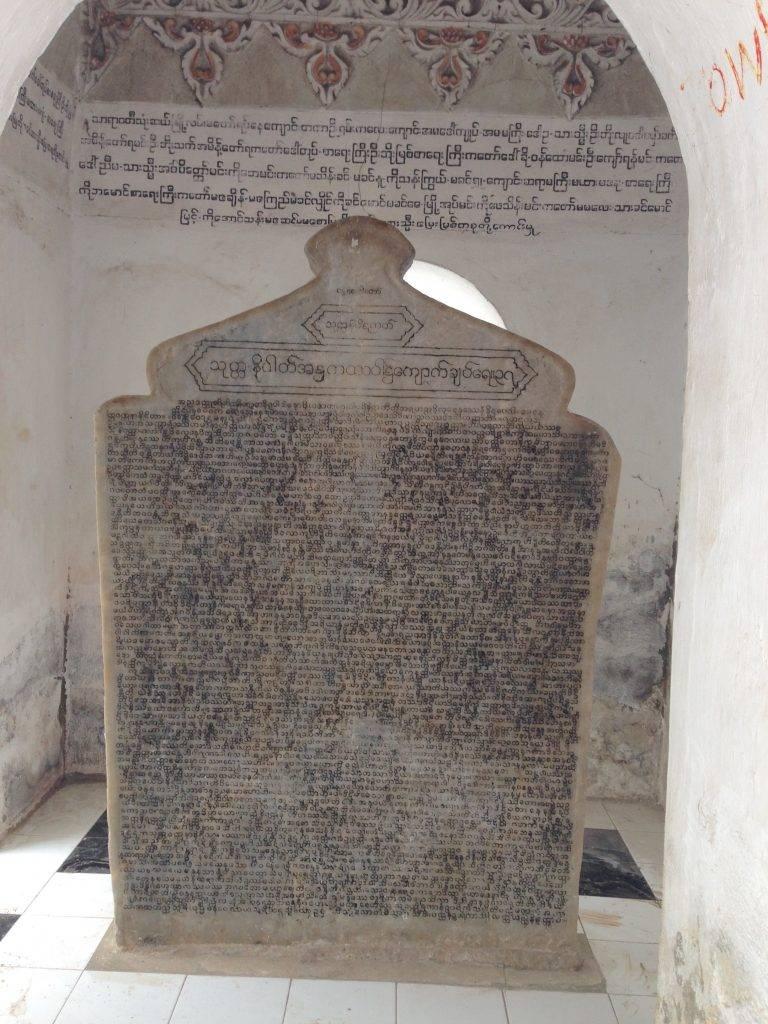
In short, the temples of Myanmar are not to be missed if you want to see some of the most beautiful and unique Buddhist statues in the world. The people of Myanmar were friendly and in general we found getting around the country to be fairly easy. If you visit, definitely try the tea leaf salad- it is delicious!
To hear more about temples of Myanmar from Deah Hester click here. You also might like to read about Myanmar Itineraries and Borobudur of Indonesia.
What to Pack for Southeast Asia
To help you pack for your trip to Southeast Asia, the below list of must-have items can be really useful.
First of all, you need a plug converter. Absolutely essential wherever you travel.
To avoid pickpockets, we recommend bringing with you a theft-proof backpack, or a crossbody bag, and a money bag.
It is also a good idea to get a hanging toiletry bag, which is a fantastic way to keep all your belongings organized; and a practical rolling suitcase like the one by Samsonite in lightweight polycarbonate.
For all the ladies, it can be a great idea to get a maxi dress: very versatile as it can be worn at any time of the day and it is ideal to go to temples too. A scarf that you can put on your shoulders as well as on your head while visiting a sacred place.
Lastly, sunglasses and sunscreen are also vital to protect you from UV radiation that can be pretty intense in Southeast Asia.

